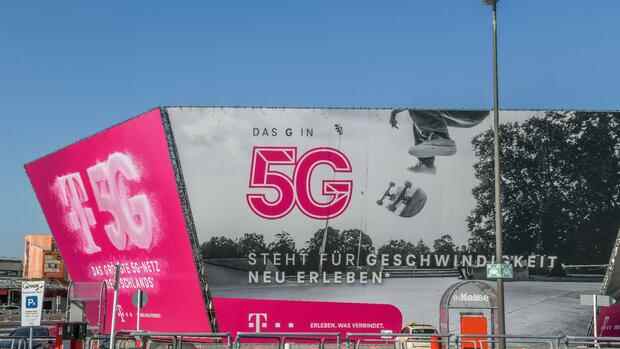Berlin In the race for supremacy in the 5G mobile communications standard, a new era begins: It is no longer the network operators and, above all, the network equipment suppliers such as Huawei or ZTE from China, Samsung and LG from South Korea or Qualcomm and Intel from the USA who decide with their patents on the type and type Way data rushes from one place to another over radio frequencies in near real-time.
The International Telecommunication Union (ITU) paved the way. After years of resistance from the classic mobile network providers, the European Telecommunications Standards Institute (Etsi) has officially accepted DECT as the 5G standard and is celebrating it as an autonomous system for everyone, as it does not depend on the mobile network providers’ radio cells and thus works decentrally, costs only a tenth and is free of charge.
“Thanks to its positive technical properties, innovative new 5G fields of application can be opened up,” says the Federal Ministry of Economics with a smile. And the President of the Federal Network Agency, Jochen Homann, says: “This is a decisive step for European standardization in global competition in the next few years. This gives our strong domestic industry in particular the opportunity to build cost-effective private local networks and strengthen their competitiveness internationally. “
Top jobs of the day
Find the best jobs now and
be notified by email.
So far, mobile communications companies such as Telekom, Vodafone and Telefónica have been trying to monetize their frequencies for 5G networks. To do this, they have to resort to network equipment providers such as Huawei, which has already sparked heated debates on security policy. The DECT standard, on the other hand, would be a European alternative. Far fewer standard-essential patents are also required. Expensive patent disputes such as those between Ericsson and Samsung, Huawei and Volkswagen or Daimler and Nokia could be a thing of the past, so the hope is.
Long range, safe and energy-saving
According to the network agency, companies can easily set up campus networks with DECT. The communication of machines can be linked and automated (Industry 4.0), building management systems such as alarm systems can be operated right through to wireless audio applications such as music concerts and conference systems. The decentralized technology is user-friendly “and offers a cost-effective alternative and addition to classic mobile radio networks in this area of application,” as the network agency judges.
Companies like Siemens have long been using the DECT standard to connect their cordless phones. The standard has been continuously developed. DECT also enables HD telephony and intelligent home solutions (smart home). “The standard has a long radio range with low latency, it is securely encrypted and very energy-saving,” said a spokeswoman for the Fritz Box provider AVM.
In fact, according to a study by the Finnish University of Tampere in cooperation with the Wirepas company, DECT has “around 60 percent” higher energy efficiency than mobile communications, as reported by the European standardization committee, Etsi, which is responsible for technical standardization.
The committee is dominated by representatives of the network operators and suppliers who were initially able to prevent the technology from being fully evaluated. In addition to Wirepas, the main drivers were Sennheiser, who then “encouraged the establishment of an evaluation group within the Etsi and offered to chair it,” reports Andreas Wilzeck, head of standardization at the audio company in Lower Saxony.
This group has successfully demonstrated the capabilities of the technology. Then the supreme Etsi committee, the general assembly, decided: DECT fulfilled all conditions and was allowed to carry the title “5G standard”. The ITU confirmed the vote.
With the decision, the radio frequencies reserved for 5G are now also available to all DECT users. ETSI speaks of a real “democratization”. The logo, as a seal of quality, also opens up the radio networks for DECT internationally, without repeated national checks.
Broad support from industry is still uncertain
At AVM it was said that DECT had previously only been used in Europe in the frequency range between 1800 and 1900 megahertz, this is now possible up to six gigahertz. “In contrast to the public 4G / 5G networks, which are the sovereignty of the network operators, with DECT and WLAN we have a modern, local radio standard that can be freely used by consumers,” said the spokeswoman. The decision of the ITU “strengthens innovations and enables product developments for local networking on the user side”.
But it will take a while until then. “It is now important to have broad support from industry“, said Sennheiser developer Wilzeck, advertising that DECT-2020 NR can be “used by anyone, anytime and anywhere” and that “manufacturers have considerable freedom for innovations”.
However, the Association of the Electrical and Digital Industry, ZVEI, is cautious. Association chief Wolfgang Weber welcomed the fact that there was technological competition. “However, the general suitability of DECT for industrial applications still needs to be checked.” “We are also promoting this standardization with the ZVEI working group 5G-ACIA.”
So the question remains: will companies use DECT to network their devices and machines? Within the federal government, the experts point out that the data rates are up to 100 megabits per second, in the cellular networks, however, up to 20 gigabits; the speed is also a little slower. And yet they sum up: Political support for the standard “makes sense” in order to further promote it.
According to the industry, the first chipset with DECT 2020 NR technology from a European chip manufacturer could hit the market as early as 2022. Correspondingly, companies could then offer their first business models.
More: Economic war of the 21st century: How China is displacing the German DIN standard
